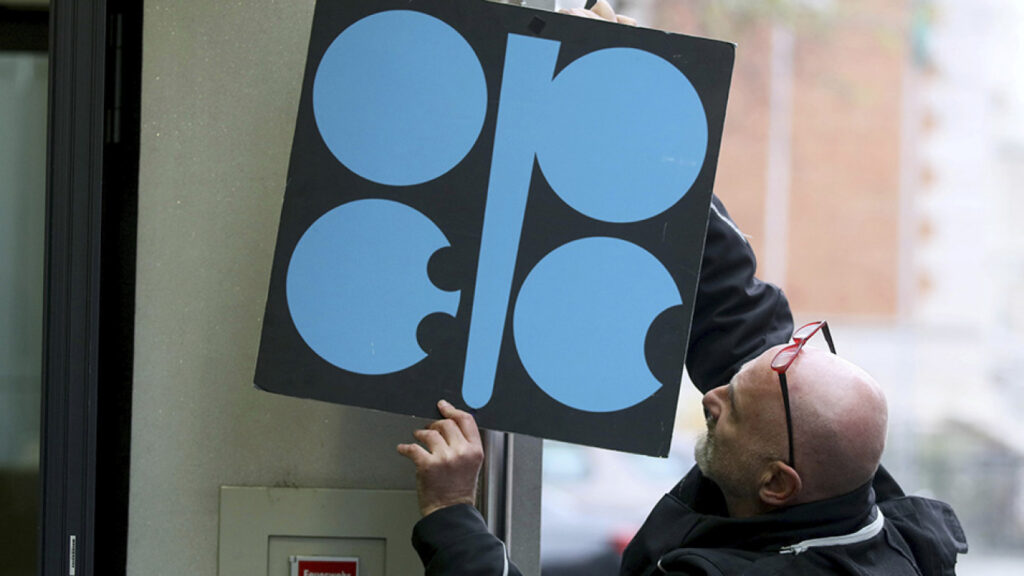OPEC and its Russian-led allies will maintain their production quotas for now, the group said after convening briefly online Dec. 4, adopting a wait-and-see stance amid a hazy outlook for the oil market.
The decision means the 2 million b/d cut in quotas from October levels will remain in place until the fallout from EU sanctions on Russian crude imports and the G7’s price cap becomes clearer.
China’s easing of some lockdown restrictions in recent days following nationwide protests could also boost oil demand imminently, but OPEC+ delegates said that impact was also too uncertain at this point.
The next OPEC+ meeting is scheduled for June 4, though a ministerial monitoring committee, co-chaired by Saudi Arabia and Russia, will meet Feb. 1 to review market conditions and potentially recommend an emergency OPEC+ meeting.
“Adhering to the approach of being proactive and pre-emptive, the participating countries reiterated their readiness to meet at any time and take immediate additional measures to address market developments and support the balance of the oil market and its stability, if necessary,” OPEC+ ministers said in a statement.
Platts, a part of S&P Global Commodity Insights, assessed Dated Brent at $86.95/b on Dec. 2, down from a three-month peak of $101.72/b on Nov. 7, as weak global economic data have weighed on prices.
Supply doubts
The supply picture has become increasingly clouded as the West steps up its punitive measures against Moscow over its invasion of Ukraine.
The EU is set to begin banning seaborne Russian crude imports on Dec. 5. The G7’s price cap, which would deny western insurance to tankers delivering Russian oil sold above $60/b, is also scheduled to be implemented on Dec. 5 or soon after.
The effectiveness and enforcement of both policies, as well as Moscow’s potential retaliatory response, are major question marks.
The G7’s price cap will apply to Russian crude based on FOB prices, which do not include the cost of insurance and shipping. Platts assessed key Russian export grade Urals FOB Primorsk at $53.47/b on Dec. 2.
With the $60/b price cap above current Urals prices, some market watchers expect Russian exports will continue to flow broadly as before, having little impact on Moscow’s oil revenue but achieving the aim of G7 policymakers who want to keep the global market well-supplied.
Russian Deputy Prime Minister Alexander Novak, who handles the country’s OPEC+ affairs, reiterated after the OPEC+ meeting that Russia would not accept the price cap.
“Such intervention, we believe, could lead to even greater instability, a shortage of energy resources, and a decrease in investment,” he said in an interview with Russia 24. “We will sell oil and oil products to those countries that work with us on market terms, even if we have to cut some production.”
Related infographic: Russian sanctions continue to impact OPEC+ economics
Novak has previously said he does not expect an impact on December export volumes as they were contracted in October and November. January volumes are being contracted now.
At any rate, the cap will not apply to oil contracted and loaded by Dec. 5 if delivered by Jan. 19.
Demand struggles
Meanwhile, in China, the world’s second largest oil consumer after the US, authorities have begun easing some coronavirus lockdown controls after weeks of mounting citizen protests.
The country’s emergence from COVID-19 has long been seen as a major potential driver for oil demand, though still-rising cases indicate a likely long road ahead for a full economic rebound.
Analysts with S&P Global Commodity Insights expect China’s 2022 demand will be down by 550,000 b/d from 2021.
“Usually these things take time to show a real impact,” one OPEC+ delegate told S&P Global before the meeting when asked if China’s lifting of lockdown measures would influence the group’s deliberations.
The situation in China was a major factor in setting the current OPEC+ quotas at the alliance’s last meeting Oct. 5, which called for a 2 million b/d cut through the end of 2023, to head off an anticipated fall in Chinese demand and signs of potential recessions in key consumer countries. Due to the fact that most OPEC+ members are vastly underproducing their targets due to sanctions, a lack of investment or internal disruptions, Saudi Arabia, Iraq, the UAE and Kuwait are bearing the vast majority of the new supply curbs.
OPEC+ officials have said that without the cut, which drew an angry reaction from US President Joseph Biden at the time, prices would have cratered.
In their statement, OPEC+ ministers said the reduction “was purely driven by market considerations and recognized in retrospect by the market participants to have been the necessary and the right course of action towards stabilizing global oil markets.”
The alliance had been set to gather in person in Vienna, but abruptly shifted those plans to online as a rollover of quotas began to emerge as the preferred option.
This time around, with prices holding below $90/b for now and the midterm elections behind them, US officials are not expected to object, sources told S&P Global.
The prospect of a deeper OPEC+ cut, as some delegates said might be considered in the run-up to the meeting, risked a geopolitical escalation on the eve of the EU sanctions that could have rocked the market.

